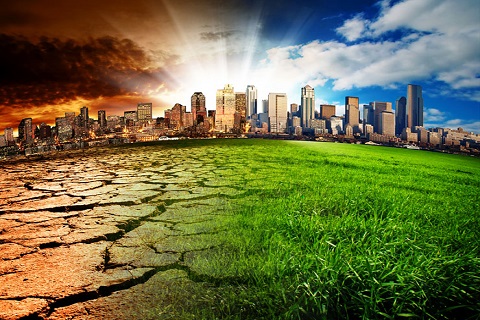New Delhi: Climate change is increasing the intensity of wildfires, reducing vegetation and making poor people more reliant on forests, resulting in an increase in conflict between wildlife and humans over habitat and resources, conservationists said Friday.
In its latest all-India tiger estimation report, released recently by Prime Minister Narendra Modi, the National Tiger Conservation Authority (NTCA) highlighted the “silent and surmounting” threats of climate change-related impacts on habitats and the loss of the quality of forests over time.
It said climate change threatens the survival of tigers in the Sunderbans and is one of the major challenges facing the wildlife in the Western Ghats.
While the big cat population in the Sunderbans is steady, it has come down substantially in the Western Ghats where 824 tigers were recorded in 2022 as against 981 in 2018.
Mohammad Sajid Sultan, the NTCA’s assistant inspector general of forests, said the wildlife is being affected by climate change with new pests and diseases emerging.
“Rain patterns are also changing subtly and gradually rather than all at once. Reports have emerged of tigers moving to higher altitudes and overlapping territories with snow leopards, which has never happened before.
“This suggests that changes are occurring in the ecosystem, including shifts in monsoon rain patterns, more dry spells and forest fires, which will likely impact vegetation and organisms in the forest, including top predators like tigers,” he said.
While empirical evidence is needed to fully understand the impact of climate change, it is undeniable that it is affecting the wildlife as well as the migration and breeding cycles of organisms, the official added.
According to a study carried out by scientists at the University of Washington’s Center for Ecosystem Sentinels, a warming world is increasing human-wildlife conflict by altering animal habitats — like sea ice for polar bears — as well as the timing of events, wildlife behaviours and resource availability.
A report from the Intergovernmental Panel on Climate Change reveals around half of the global population is facing severe water scarcity for at least a month per year as a result of climatic and other related factors.
This forces the wildlife and people to venture out and look for new sources of water.
Anish Andheria, the president of the Wildlife Conservation Trust and a member of the NTCA, said climate change is having a devastating impact on both wildlife and communities.
“Climate change has led to erratic weather patterns, causing crop yields to diminish and making farmers increasingly dependent on forests for their livelihoods.
“As a result, poor people are becoming even more reliant on forests for food and fuelwood, which in turn is leading to a rise in human-wildlife conflicts,” he said.
Moreover, the increasing frequency and intensity of forest fires, which is a direct result of drier weather conditions, is not only burning the undergrowth but trees as well. This leads to the degradation of entire forests and causes animals to venture out of their territories and come into conflict with humans, the conservationist added.
Lead-Tigers for WWF-India Pranav Chanchani said climate change has varied effects on tiger habitats, with the Sunderbans experiencing the most noticeable impact.
The rising sea level is gradually reducing the extent of mangrove habitats available for tigers and their prey, he said.
In other regions, climate change has been associated with forest degradation and a decrease in vegetation due to heat and water stress. More research is required to establish the connections between climate change, forest fires, vegetation and invasive plants, Chanchani said.
Given the increasing habitat fragmentation caused by linear development and land-use changes, he said the ability of large mammals to adapt and move in response to drastic weather events or climate-induced environmental changes is also becoming more challenging.
PTI
